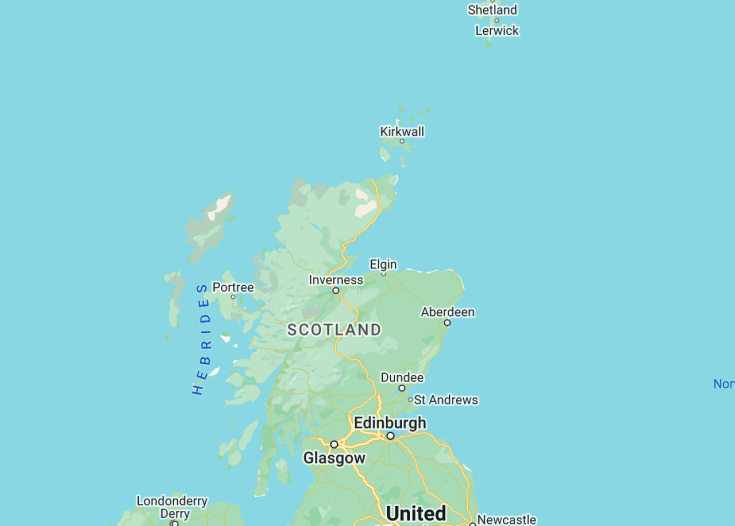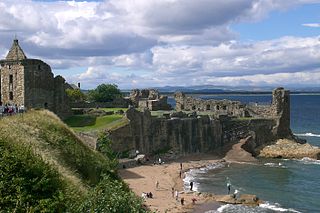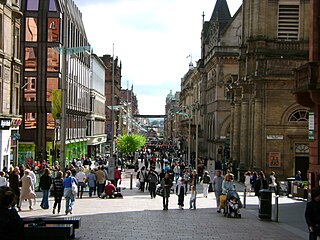Scotland, a majestic expanse of rugged highlands, serene lochs, and ancient castles, beckons visitors to immerse themselves in a fusion of deep-rooted heritage, dynamic arts, and breathtaking landscapes. Explore its pulsating cities, remote islands, and dive deep into tales of legendary figures that have shaped its storied past.
While in the highlands, hire a local guide; their expertise unveils hidden treasures and captivating folklore.
Visiting in August? Ensure you attend the Edinburgh Festival Fringe, a globally-renowned arts spectacle.
Top destinations in Scotland (United Kingdom)
Scotland: The Enchanting Land of Castles and Legends
| Capital | Edinburgh |
| Time in Scotland | GMT (Greenwich Mean Time) |
| Language spoken | English, Scottish Gaelic |
| Population | 5,454,000 (World Bank, 2020) |
| Religion | Christianity (66%) Other religions (10%) No religion (28%) |
| Currency | Pound Sterling (£, GBP) |
| Airports | Glasgow International Airport Edinburgh Airport Aberdeen International Airport |
Scotland: a land of ancient castles, breathtaking landscapes, and captivating legends. Nestled in the northern part of the United Kingdom, Scotland offers a unique blend of history, culture, and natural beauty. With its rich heritage and warm hospitality, it’s no wonder that Scotland is a favorite destination for travelers seeking an unforgettable experience.
Where is Scotland located?
Scotland is located in the northern part of the United Kingdom, sharing a border with England to the south. It is surrounded by the Atlantic Ocean on the west and the North Sea on the east. Its stunning landscapes include mountains, lochs (lakes), and picturesque islands.
What is Scotland famous for?
Scotland is famous for its iconic castles, such as Edinburgh Castle and Stirling Castle, which offer a glimpse into the country’s medieval past. The rugged highlands, including the legendary Loch Ness, are renowned for their scenic beauty and provide endless opportunities for outdoor adventures, from hiking to wildlife-spotting. Scotland is also known for its vibrant music and cultural festivals, including the Edinburgh Festival Fringe, the world’s largest arts festival.
History
The history of Scotland (United Kingdom) dates back thousands of years. The area that is now Scotland was inhabited by various Celtic tribes, such as the Picts and the Gaels, before being invaded by the Romans in the 1st century AD. The Romans established forts and roads, but their control over Scotland was limited.
(843-1100) Kingdom of Alba
In the 9th century, the Kingdom of Alba emerged as a unified state under King Kenneth MacAlpin. This marked the beginning of Scotland as a distinct nation. The Kingdom of Alba continued to grow and consolidate its power throughout the next several centuries.
(1100-1603) Medieval Scotland
During the medieval period, Scotland experienced both political and religious turmoil. The Wars of Scottish Independence against England, led by figures such as William Wallace and Robert the Bruce, defined much of this period. Scotland also faced internal conflicts, such as the Wars of the Three Kingdoms.
(1603-1707) Union of the Crowns and the Act of Union
In 1603, James VI of Scotland became James I of England and Ireland, uniting the crowns of the three kingdoms. This marked the beginning of the Stuart dynasty in England, which had significant consequences for Scotland. In 1707, the Act of Union was passed, officially uniting the Kingdom of Scotland with the Kingdom of England to form the Kingdom of Great Britain.
(18th-19th Century) Industrialization and Political Reform
The 18th and 19th centuries saw significant changes in Scotland. Industrialization transformed the country, with cities like Glasgow becoming centers of trade and manufacturing. The Scottish Enlightenment also flourished during this period, with notable figures such as Adam Smith and David Hume making significant contributions to philosophy and economics.
(20th Century-Present) Devolution and Independence
In the 20th century, Scotland experienced further political changes. The devolution of powers to the Scottish Parliament in 1999 marked a shift towards greater autonomy within the United Kingdom. The question of Scottish independence has been a topic of debate, with a referendum held in 2014 in which the majority voted to remain in the United Kingdom.
Visit Scotland
What to see and do in Scotland (United Kingdom)
Scotland offers a wide range of attractions and activities for visitors to enjoy. Here are some of the top things to see and do in Scotland:
- Explore the historic Edinburgh Castle and walk along the Royal Mile in Edinburgh.
- Visit the breathtaking landscapes of the Scottish Highlands, including Loch Ness and Glencoe.
- Experience traditional Scottish culture and music at a ceilidh.
- Discover the stunning Isle of Skye, known for its rugged coastline and picturesque villages.
- Go whisky tasting at one of Scotland’s many distilleries and learn about the country’s famous whisky production.
- Enjoy outdoor activities such as hiking, golfing, and fishing in the beautiful Scottish countryside.
Short tile about events in Scotland (United Kingdom)
Scotland hosts various events throughout the year, offering unique cultural experiences. Some notable events include the Edinburgh Festival Fringe, the world’s largest arts festival, which takes place in August, and the Hogmanay celebrations, Scotland’s famous New Year’s Eve party. Additionally, the Highland Games are held across Scotland during the summer, showcasing traditional sports and cultural events. Other events include the Edinburgh International Festival, the Royal Highland Show, and the St. Andrew’s Day celebrations.
Best time to visit Scotland
The best time to visit Scotland depends on personal preferences and the activities you plan to undertake. The summer months (June to August) offer longer daylight hours and milder weather, making it ideal for outdoor activities and exploring the scenic landscapes. However, this is also the peak tourist season, so popular attractions can be crowded. Spring (March to May) and autumn (September to November) can also be great times to visit, with pleasant weather and smaller crowds. Winter (December to February) is less crowded, and it’s an opportunity to experience Scotland’s festive celebrations and enjoy winter sports.
Is Scotland worth visiting?
Scotland is definitely worth visiting for its rich history, stunning landscapes, and unique cultural experiences. The country’s castles, such as Edinburgh Castle and Eilean Donan Castle, offer insights into Scotland’s medieval past, while the Scottish Highlands provide breathtaking scenery that has inspired countless artists and writers. The vibrant cities of Edinburgh and Glasgow are full of charm and offer a wide range of cultural activities.
However, it’s important to note that Scotland’s weather can be unpredictable, with rain and wind being common throughout the year. Additionally, some attractions can be crowded during the peak tourist season. Despite these factors, the beauty and cultural heritage of Scotland make it a worthwhile destination for those seeking a mix of history, natural beauty, and warm Scottish hospitality.


















